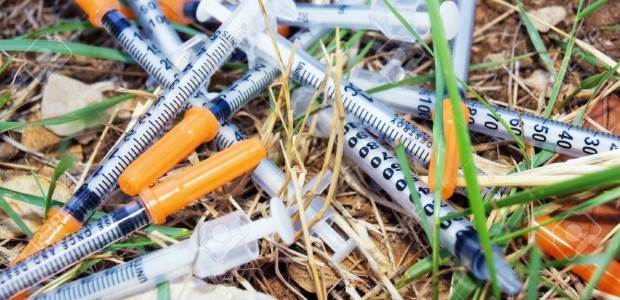
NYC Mayor Announces Bronx Opioids Action Plan
The Bronx surpassed Staten Island in 2017 as the borough with the highest rate of overdose deaths, according to Health Department data. "The Bronx needs more support to reduce drug overdoses, and the city is ready to provide that support," said Deputy Mayor for Health and Human Services Dr. Herminia Palacio.
New York City Mayor Bill de Blasio and First Lady Chirlane McCray this week announced the Bronx Action Plan, a bid to tackle the opioid epidemic in the South Bronx, which is disproportionally affected by fatal drug overdoses. While overdose deaths citywide began to flatten in 2017, OD deaths rates in the Bronx increased 9 percent from 2016 to 2017, compared to 2 percent across the city. The plan will dedicate $8 million solely for programs in the Bronx to increase health staffers who assist first responders, $1 million in ad campaigns warning about the dangers of fentanyl, more life-saving naloxone kits, and funding for Bronx-based support groups that connect people to treatment.
During the past six months, the city's Parks Department has collected about 70,000 syringes from parks in the Bronx, but more help is needed. Through the plan, the department will expand its program to reduce syringe waste by dedicating six new City Parks workers to routinely canvass and clean high-volume litter areas in South Bronx parks.
"We're starting to see progress in our fight against the opioid crisis, but we won't stop until every New Yorker is free from this addiction," the mayor said. "We're increasing resources in the Bronx to make sure one of the hardest-hit boroughs has the resources it needs to turn the tide on this devastating epidemic."
"Today New York City takes new actions to double down on the opioid epidemic in the Bronx," said McCray, who leads the city's mental health and substance misuse efforts. "With this effort, we will work with trusted community partners to embed services into the fabric of the hardest-hit communities of the Bronx so there is no wrong door and people can find help wherever they are. And they will have support through every step of the recovery process to treat the whole person, not just their addiction."
The Bronx surpassed Staten Island in 2017 as the borough with the highest rate of overdose deaths, according to Health Department data. "The Bronx needs more support to reduce drug overdoses, and the city is ready to provide that support," said Deputy Mayor for Health and Human Services Dr. Herminia Palacio. "HealingNYC has allowed us to analyze mortality data much faster and know where drug overdoses are occurring much sooner — that information is guiding our strategies. We are doubling down our commitment to Bronx, creating innovative ways to connect people who use drugs to addiction treatment and partnering with communities to develop more support groups for people at risk."
"Overdose is preventable, and opioid addiction is treatable," added Acting Health Commissioner Dr. Oxiris Barbot. "Health Department staffs are in the Bronx every day to share life-saving information about harm reduction and naloxone and to connect people to services. We are also proud to support the essential Bronx community organizations that do this work, such as primary care practices and emergency departments, substance use disorder treatment programs, syringe service programs, and other opioid overdose prevention programs. Together, we will help more people have the tools and information to reduce their risk of overdose and improve their health."
The city aims to double its capacity to reverse overdoses by distributing 15,000 naloxone kits to Bronx Opioid Overdose Prevention Programs by the end of 2018. This would put about 8,000 more naloxone kits in the Bronx community this year than in 2017. The Health Department will recruit more Bronx organizations to distribute naloxone and provide overdose response trainings to educate community members on how to respond to an opioid overdose.
The Health Department will launch a public awareness campaign to educate New Yorkers about the critical dangers of fentanyl and its presence in cocaine, crack cocaine, and heroin with ads at Bronx bus shelters, subway stations, billboards, bodegas, barbershops, laundromats, and other venues.